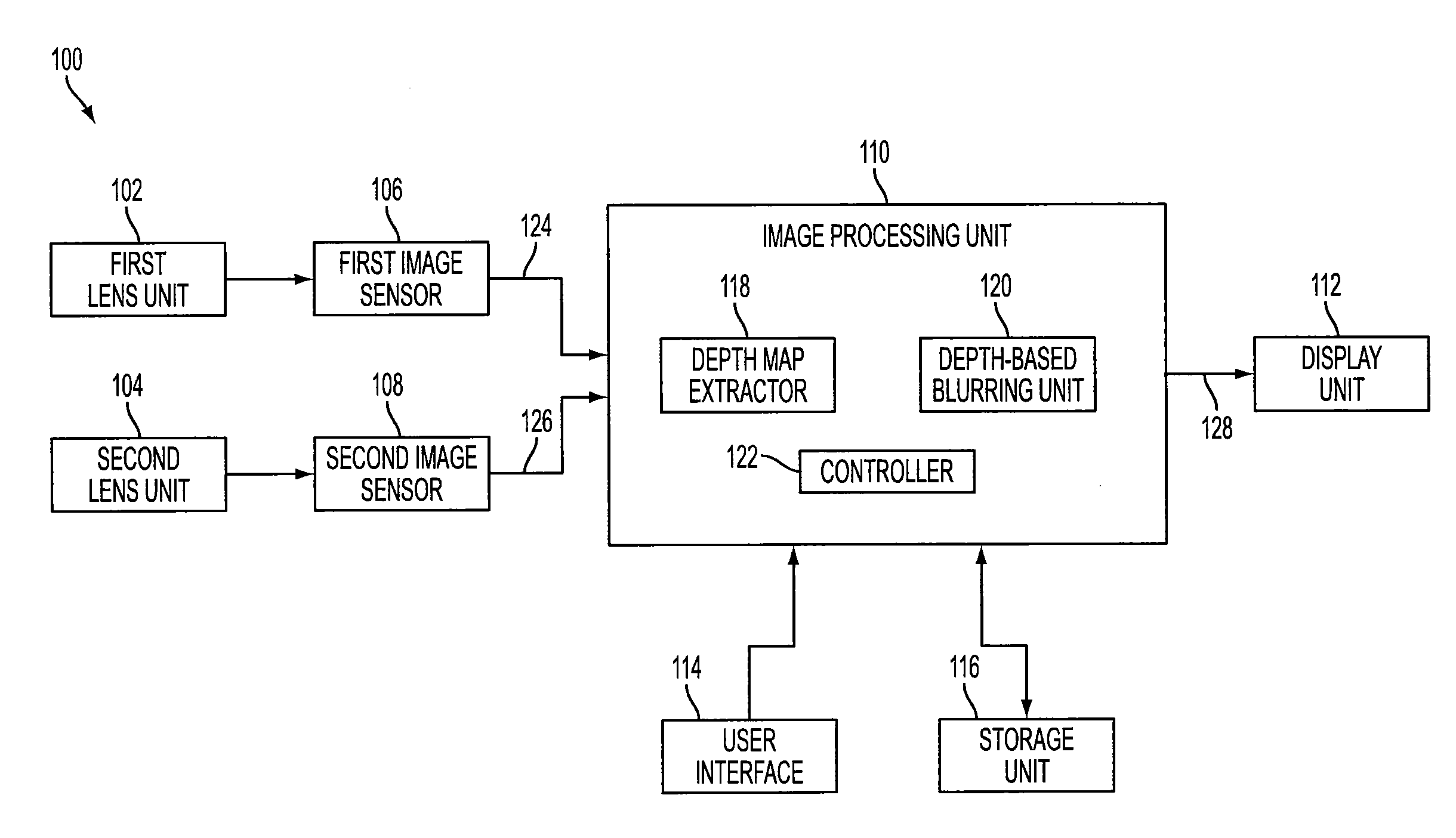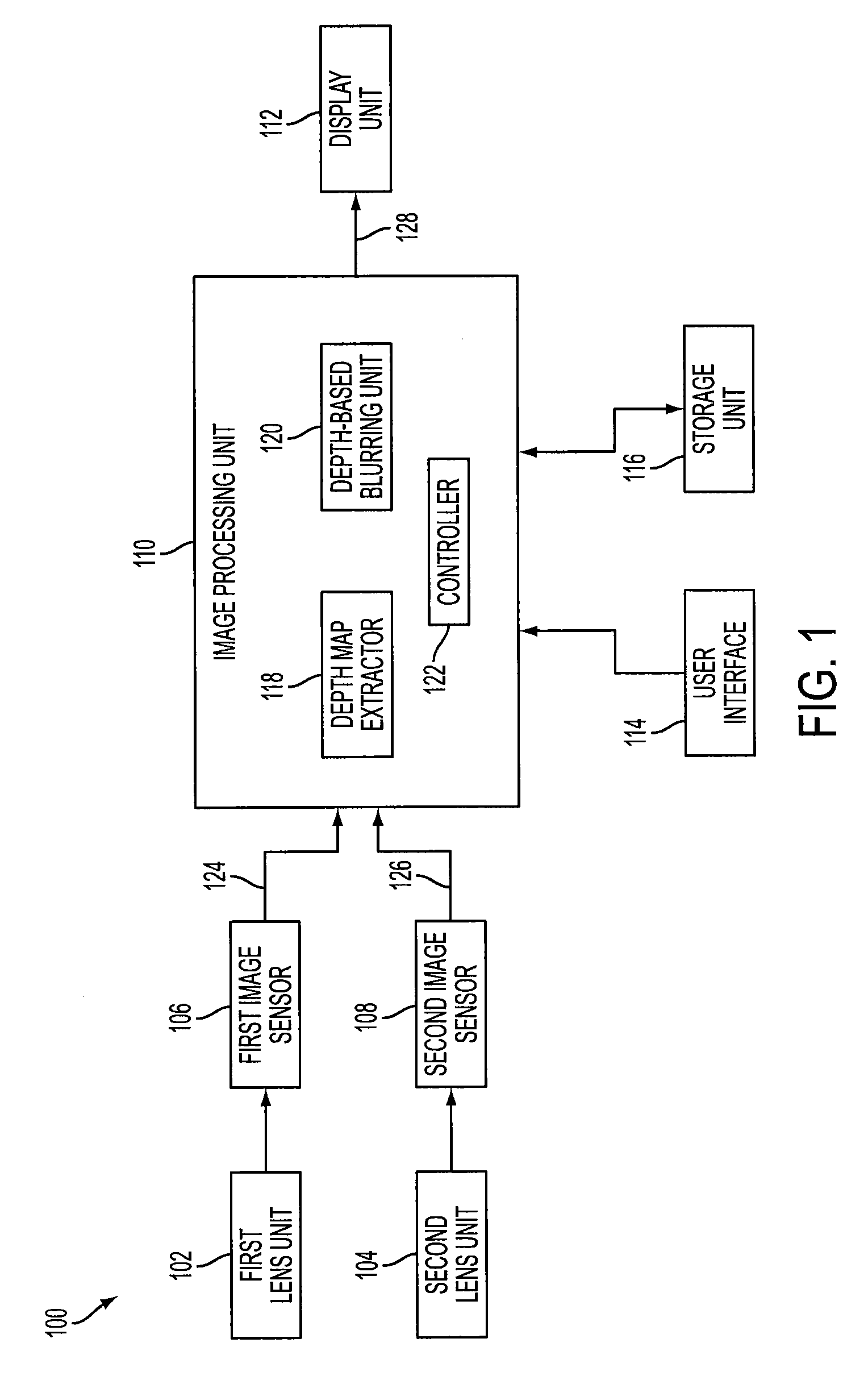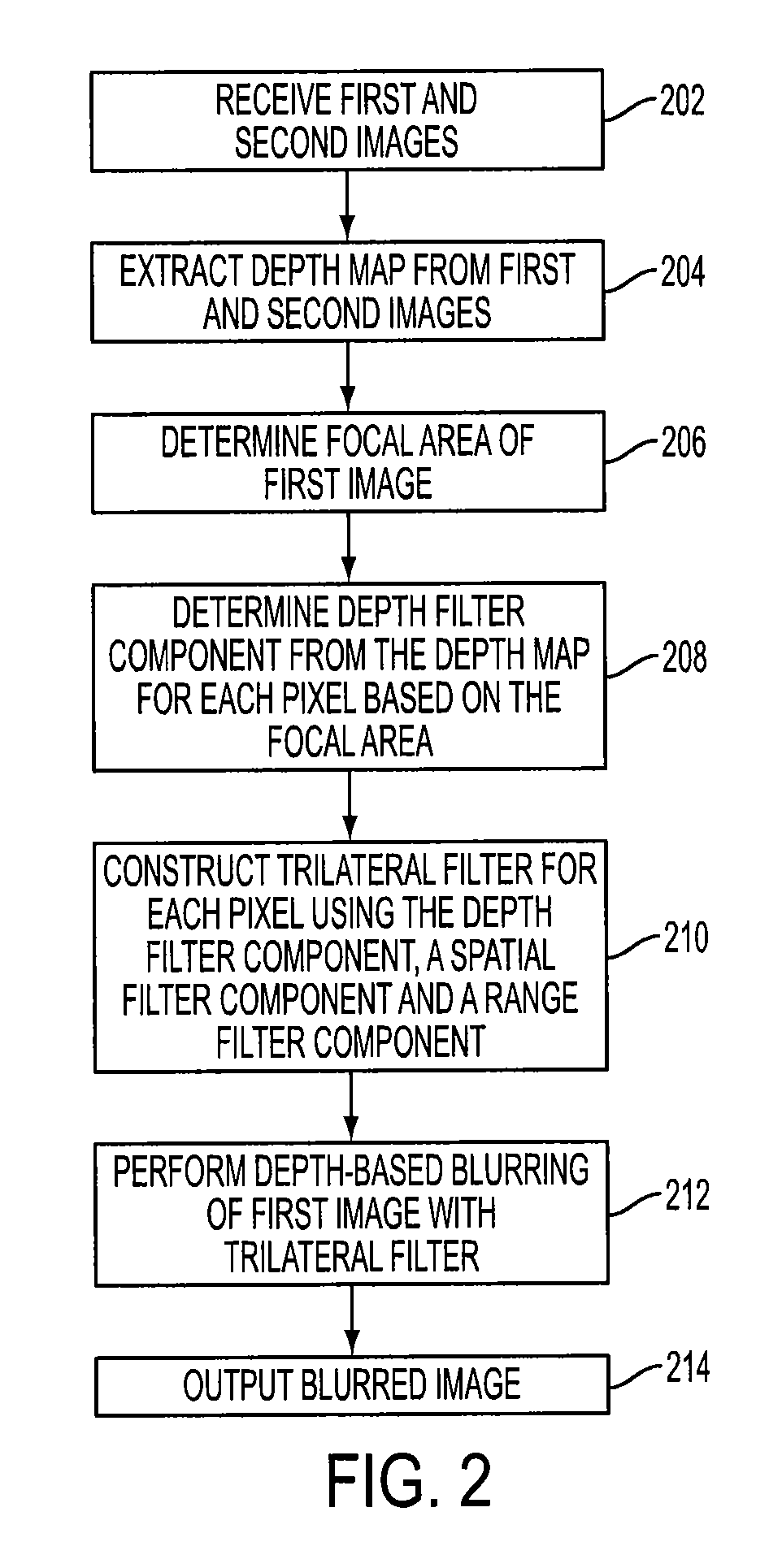Method of depth-based imaging using an automatic trilateral filter for 3D stereo imagers
a technology of trilateral filter and depth-based imaging, applied in image enhancement, image analysis, instruments, etc., can solve the problems of small lens aperture, inability to achieve shallow depth of field, and inability to achieve the same artistic defocus effect that may be achieved with professional dslr cameras
- Summary
- Abstract
- Description
- Claims
- Application Information
AI Technical Summary
Benefits of technology
Problems solved by technology
Method used
Image
Examples
Embodiment Construction
[0018]FIG. 1 is a block diagram of an example stereo imager, designated generally as 100. Stereo imager 100 includes first and second lens units 102, 104, first and second image sensors (or left and right image sensors) 106, 108, image processing unit 110 and display unit 112. Stereo imager 100 may also include user interface 114 and storage unit 116.
[0019]First and second lens units 102, 104 may gather light from an object and form images on respective regions of first image sensor 106 and second image sensor 108. As described further below with respect to FIG. 9, first and second image sensors 106, 108 may perform photoelectric conversion of light from respective first and second lens units 102, 104 into electric signals corresponding to first and second images 124, 126.
[0020]Image processing unit 110 may process the first and second images 124, 126 input from respective first and second image sensors 106, 108 to produce output image 128, which may be displayed on display unit 112...
PUM
 Login to View More
Login to View More Abstract
Description
Claims
Application Information
 Login to View More
Login to View More - R&D
- Intellectual Property
- Life Sciences
- Materials
- Tech Scout
- Unparalleled Data Quality
- Higher Quality Content
- 60% Fewer Hallucinations
Browse by: Latest US Patents, China's latest patents, Technical Efficacy Thesaurus, Application Domain, Technology Topic, Popular Technical Reports.
© 2025 PatSnap. All rights reserved.Legal|Privacy policy|Modern Slavery Act Transparency Statement|Sitemap|About US| Contact US: help@patsnap.com



